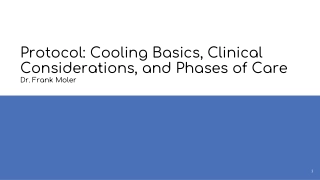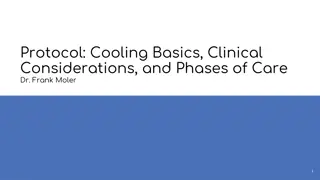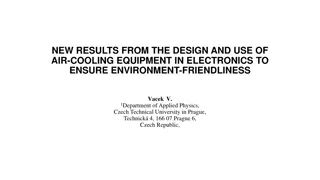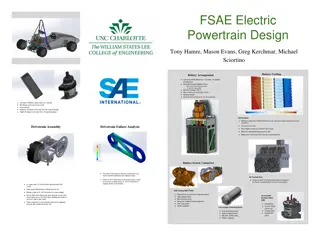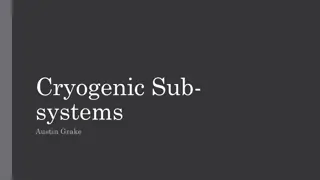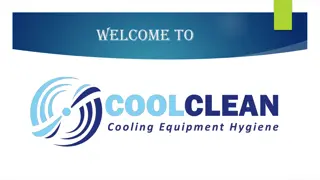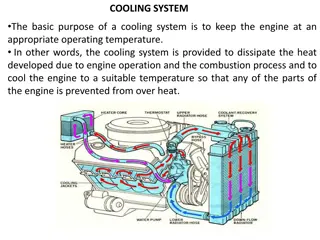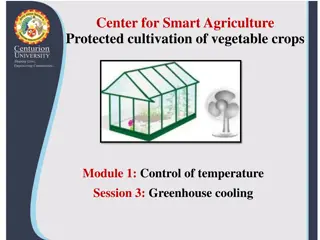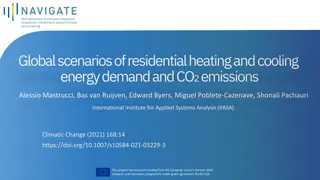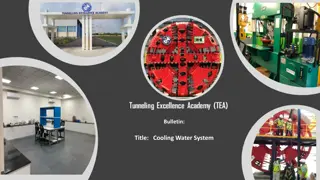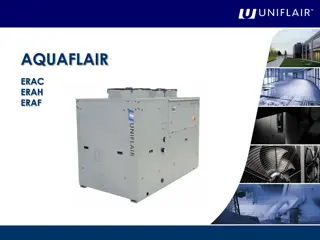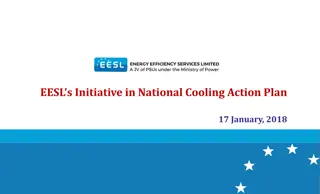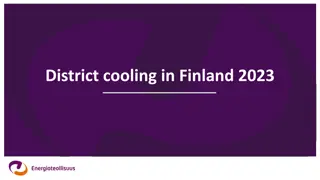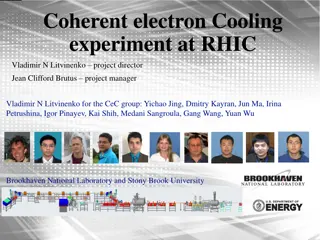NATIONAL COOLING ACTION PLAN
The plan discusses implications of HCFC phase out, HFC phase down, and the Kigali Amendment for residential, commercial, and industrial air conditioning. It covers current status, technology options, energy efficiency benchmarks, and strategies for transitioning to sustainable refrigerants. Challenges posed by regulatory changes and the need for further research are highlighted.
Download Presentation

Please find below an Image/Link to download the presentation.
The content on the website is provided AS IS for your information and personal use only. It may not be sold, licensed, or shared on other websites without obtaining consent from the author.If you encounter any issues during the download, it is possible that the publisher has removed the file from their server.
You are allowed to download the files provided on this website for personal or commercial use, subject to the condition that they are used lawfully. All files are the property of their respective owners.
The content on the website is provided AS IS for your information and personal use only. It may not be sold, licensed, or shared on other websites without obtaining consent from the author.
E N D
Presentation Transcript
1 NATIONAL COOLING ACTION PLAN AIR CONDITIONING RESIDENTIAL, COMMERCIAL & INDUSTRIAL APPLICATIONS Jitendra Bhambure ODS Chair RAMA
Thematic thrusts 2 Implications of HCFC Phase out, HFC Phase down & Kigali Amendment, inter-alia sectors & applications highlighting Current qualitative and quantitative available information including reports, guidelines, regulations etc. Past trends and growth projections with a 20 year time horizon Technology options with respect to refrigerant transitions and energy efficiency Current levels of energy efficiency and Efficiency enhancement options and related Benchmarks Preparedness for transitions & related capital and operational costs Some elements of the road map. Topics that need detailed and additional study
3 Present status
Background 4 The penetration of Room AC is around 5 to 6 %, 70% of the buildings for commercial use are yet to be built which will require air-conditioning The Regulation are being formulated at increasing pace like energy efficiency programs, up-gradation/development of IS Standards, refrigerants phase out and down , QCO, E- waste. There is uncertainty in adoption of technologies to meet the regulations. This has created immense pressure across the business chain
HCFC phase out & HFC phase down 5 HCFC 22 phase out as per MC 2025 HFC : Freeze 2028, Phase down to start in 2032 Status in India Room AC is fast migrating from fix speed to inverter resulting in adoption of HFC 410A as refrigerant ( approx 25 % ), few manufacturers have adopted HFC 32 ( approx 15%) and HC 290 (approx 1%) Large Chillers have adopted HFC 134a & VRF has adopted HFC 410A the technologies being brought in India by MNCs There is no alternative as of today to HFC 410A in ducted, small chillers & VRF, few MNC s are working to develop alternate refrigerants to R410A The adoption of HC in room AC has challenges in terms of safety across the business chain
Room AC energy efficiency 6 The labeling program started in 2010, has been enhanced 4 times The MEPS for FIVE star has increased by 45% (22% of the market) and by 29% in THREE star (55 % of the market) as per the BEE labeling program The products are getting costlier & the technology is reaching a plateau 5 STAR 1.5 T Copper wt(KG) Alu wt (KG) Compressor Motor Drive Chassis 2010 2.10 1.95 Fix speed AC NA 500 mm 2018 2.78 3.10 Inverter DC Required 625 mm
Energy efficiency 7 The Energy Efficiency labeling Programs are pushing for higher and higher efficiency and has put the HVAC industry in a perpetual design cycle The approach is focused on the products, being measurable, easy to implement, however the technology is reaching the limit We feel that energy saving should be the focus and not product energy efficiency only. Reducing heat load, usage and maintenance of the equipment needs to be addressed.
Frequent non synchronized regulatory changes 8 The speed of adoption of new technologies to meet various technologies has strained the business cycle. To add to it, implementation of the various regulations is not synchronized. This has impacted in abrupt changes in the product life cycle & premature ending the life of the product creating confusion in the market The changes involve resources to be added in R&D, product management, supply chain, production, service of manufacturers and by the distributors & dealers Capital and resource investments are not fully recovered which is not affordable in country like India with high interest rates
Training and competency development of service technicians 9 Customer dissatisfaction, power quality issues, frequent voltage fluctuation & outage (Tier II, Tier III Cities) which ultimately affect the product parts/life and repeated service calls are financial burden on the manufacturers Competency of the distributor and dealer technicians who are spread across the country are unable to cope with the pace of the change of technologies such as invertor and refrigerants.
10 Long term
Multi prong approach 11 The final goal should be to save energy consumption and reduce impact due to refrigerants and ensure that the comfort to the human population and demand for the industrial cooling is met for the growth of the country Present approach is narrow and is based on finding alternatives to refrigerants and increase in the efficiency, we should acknowledge that we may reach dead end This is significant for India as against developed world as we have low penetration levels and we have to be on high growth path to come to the level of developed world standards in next 25 years Develop codes for residential buildings in line with ECBC this will reduce the heat load by approx 25 % as seen in Green buildings
India climate map & cooling needs 12 Plan should be developed based on the climate zones Considering that the plan is to be developed for 20 years plus, alternatives to vapor compression based cooling solutions needs to be developed Study to be initiated to understand cooling requirement, estimated growth after considering techno social factors Investment in research is needed 20 years is a long period and we should assume that disruptive technologies will emerge
Air conditioners capacity 13 Internal heat generation Ingress heat AC Capacity = Heat Ingress + Internal heat generation Ingress of heat depends on building design and construction material. If we reduce ingress, air-conditioning capacity will reduce & will reduce refrigerant consumption per unit & energy consumption India has rich history of addressing climate based construction to reduce heat load, integration of modern science is needed
Summary 14 Equipment energy efficiency has reached a plateau Study of service and maintenance and its relation with energy consumption Cost of products are higher as they are to be built to meet higher voltage fluctuations and voltage surge. This affects the efficiency of product. Need to address this issue at national level. Adoptable solutions for refrigerants is still out of site The present approach will deprive large mass of population from cooling, modern amenities as well industrial growth in the country Multi prong approach is required based on India specific detail study & we should initiate work on Green residential buildings Investments are required in research of India specific alternative cooling solutions
15 Jitendra Bhambure Executive Vice President R & D and Technology Blue Star Chair : RAMA ODS committee jmbhambure@bluestarindia.com


